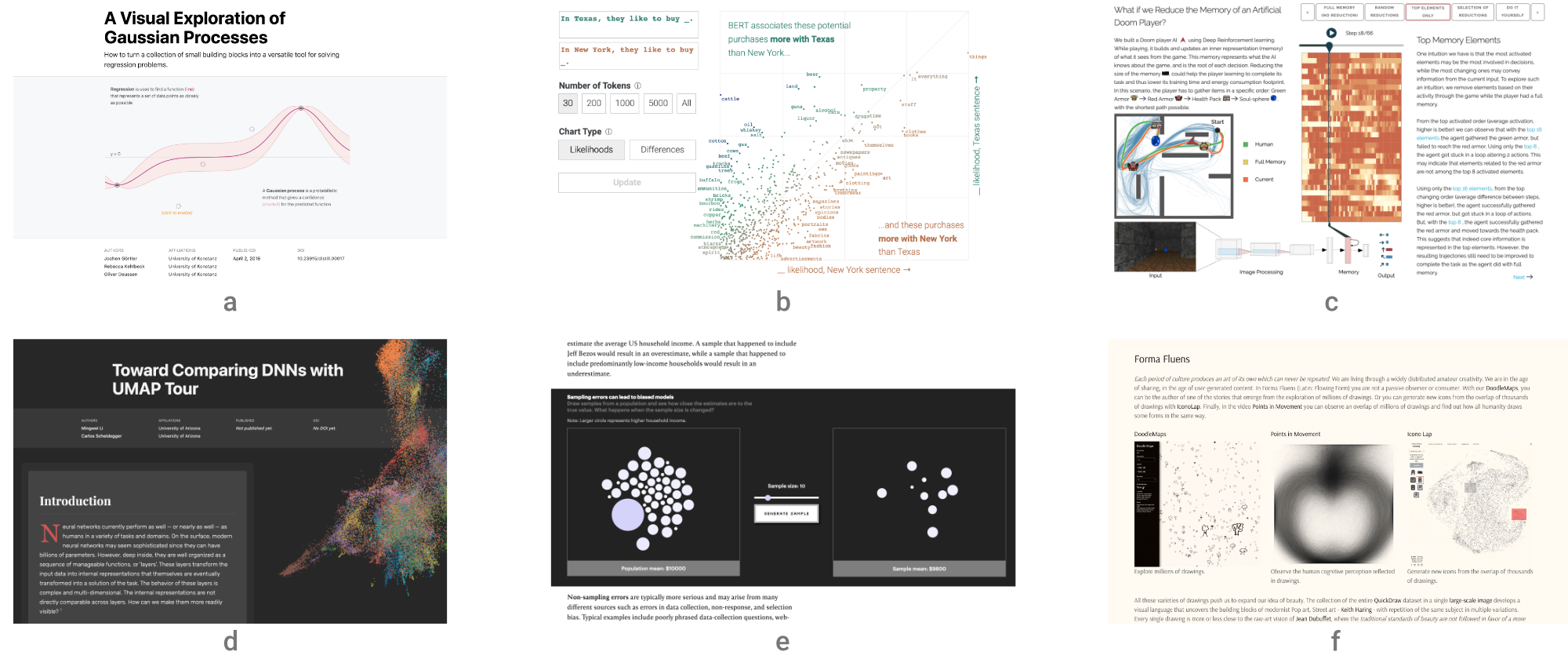5th Workshop on
Visualization for AI Explainability
October 17th, 2022 at IEEE VIS in Oklahoma City, Oklahoma

The role of visualization in artificial intelligence (AI) gained significant attention in recent years. With the growing complexity of AI models, the critical need for understanding their inner-workings has increased. Visualization is potentially a powerful technique to fill such a critical need.
The goal of this workshop is to initiate a call for 'explainables' / 'explorables' that explain how AI techniques work using visualization. We believe the VIS community can leverage their expertise in creating visual narratives to bring new insight into the often obfuscated complexity of AI systems.

- (a) A Visual Exploration of Gaussian Processes by Görtler, Kehlbeck, and Deussen (VISxAI 2018)
- (b) What Have Language Models Learned? by Adam Pearce (VISxAI 2021)
- (c) What if we Reduce the Memory of an Artificial Doom Player? by Jaunet, Vuillemot, and Wolf (VISxAI 2019)
- (d) Comparing DNNs with UMAP Tour by Li and Scheidegger (VISxAI 2020)
- (e) The Myth of the Impartial Machine by Feng and Wu
- (f) FormaFluens Data Experiment by Strobelt, Phibbs, and Martino
Important Dates
Program Overview
All times in ET (UTC -5).
| 2:00 -- 2:05 | Welcome from the Organizers |
| 2:05 -- 2:55 | Keynote: Ian Johnson (Observable) - @enjalot Towards a Pattern Language for Visualizing AI |
| 2:55 -- 3:15 | Session I K-Means Clustering: An Explorable Explainer Yi Zhe Ang Action as Information Paschalis Bizopoulos |
| 3:15 -- 3:45 | Break |
| 3:45 -- 4:15 | Session II How is Real-World Gender Bias Reflected in Language Models? Javier Rando, Alexander Theus, Rita Sevastjanova, Mennatallah El-Assady Explaining Image Classifiers with Wavelets Julius Hege What should we watch tonight? Ibrahim Al-Hazwani, Gabriela Morgenshtern, Yves Rutishauser, Mennatallah El-Assady, Jürgen Bernard |
| 4:15 -- 4:45 | Session III Poisoning Attacks and Subpopulation Susceptibility Evan Rose, Fnu Suya, David Evans Mapping Wikipedia with BERT and UMAP Brandon Duderstadt An Interactive Introduction to Causal Inference Lucius E.J. Bynum, Falaah Arif Khan, Oleksandra Konopatska, Joshua Loftus, Julia Stoyanovich |
| 4:45 -- 5:00 | Closing Session |
Hall of Fame
Each year we award Best Submissions and Honorable Mentions. Congrats to our winners!